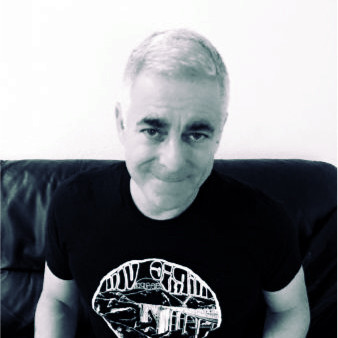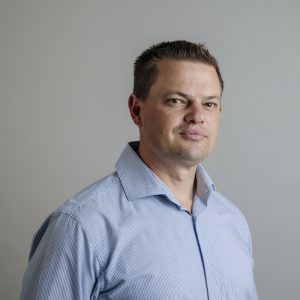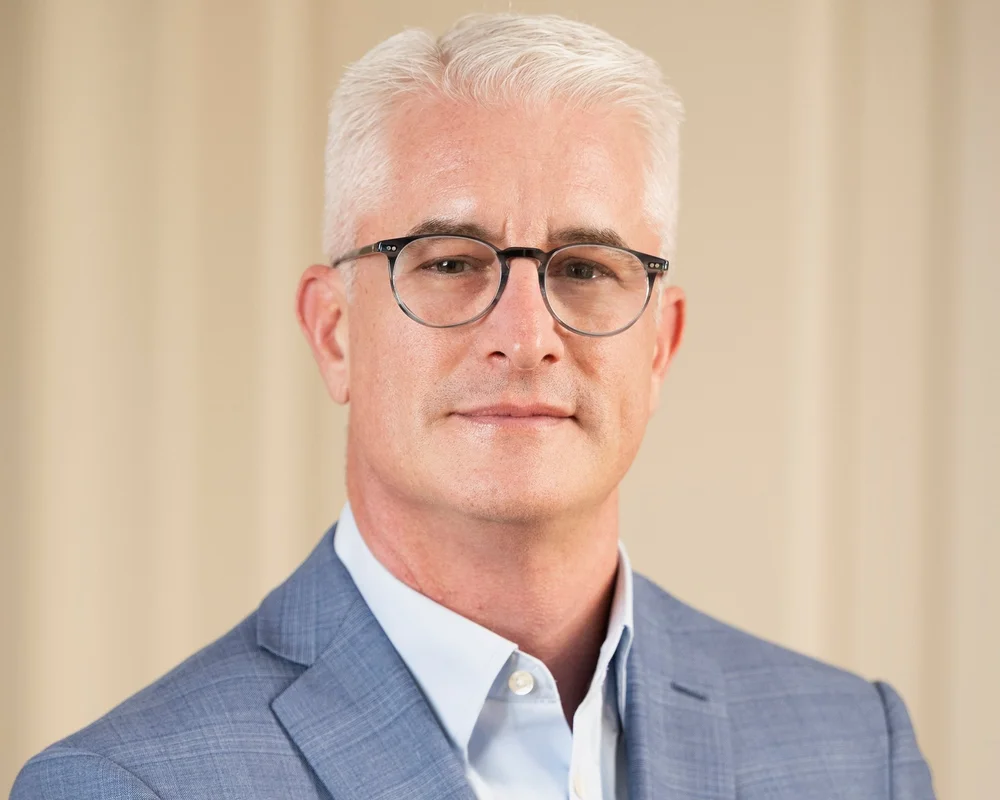 Since its acquisition of Cyan a few years ago, Ciena has continued to build up its software and services division. The Blue Planet solution has become a key piece of the company’s plans to support network and services automation. Ciena has been very active in standards development, trials, and live deployments of such solutions across the sector. With us today to give his perspective on the present and future of SDN, NFV, and automation is Rick Hamilton, SVP of Global Software and Services at Ciena.
Since its acquisition of Cyan a few years ago, Ciena has continued to build up its software and services division. The Blue Planet solution has become a key piece of the company’s plans to support network and services automation. Ciena has been very active in standards development, trials, and live deployments of such solutions across the sector. With us today to give his perspective on the present and future of SDN, NFV, and automation is Rick Hamilton, SVP of Global Software and Services at Ciena.
TR: How does Ciena approach the growing software side of network technology?
RH: Everything we’re doing is about how do we make the Adaptive Network real, or probably a better word is pragmatic. In the automation realm there’s a ton of rhetoric, and so our North Star has always been, “Whatever we’re going to do, it’s got to be real and pragmatic.” The end-state or what we’re building towards is closed-loop automation. The industry has to move itself beyond task-based automation. Artificial Intelligence or machine-to-machine learning, policy control over that automation, and an in-depth understanding of the topology from a networking context under which you’re trying to automate are each going to be incredibly important. So that’s where we have been investing time and money. A year ago, the extent of our automation portfolio was a Multi-Domain Service Orchestrator product. Today, with the Packet Design acquisition, we’ve now got capabilities that cover all three layers of the networking stack. We’ve integrated the policy engine from ONAP into our platform. And the Packet Design acquisition has also brought in some fantastic capabilities like route paths computation and the ability to optimize and assure traffic across those paths.
TR: What was the rationale behind the acquisition of Packet Design?
RH: The rationale was pretty simple: if you’re going to be pragmatic and practical in the automation space, you’ve got to cover layers one, two, and three. We already had a multi-domain, multi-vendor heritage and a core competency in layer one and layer two. Packet Design’s products were developed for layer three down, and was therefore nicely complementary. They have talented experts, particularly in IP/MPLS technology, and had developed very capable analytics and intelligence into their platform, specifically around their path computation engine. There’s a lot of IP there which was obviously important to us, particularly in light of what’s happening in the virtualized space with VNF and SD-WAN.
TR: How has the integration gone so far, both in terms of technology and people?
RH: It’s still early days of course but it’s gone very smoothly. The technology integration is going very well. We had already engaged in a handful of projects in the market, so when we acquired them we had a good sense of how well the technology would hang together. That’s proven itself out, and we’re ready to deploy it. The people side of the integration is great. Just under 100 people came across through the Packet Design acquisition. They all brought skills to the table that are highly valued in our organization and that we didn’t necessarily have, particularly in the IP/MPLS space. We’re all engineers at heart and the former Packet Design team is having an opportunity to have a big impact on what we’re doing and where we’re taking the portfolio. Several of their key technical leaders now sit on my staff and they look across the entire Blue Planet spectrum for us.
TR: What other pieces of the automation puzzle is Ciena putting together?
RH: In addition to our Packet Design acquisition, we are in the process of closing our acquisition of DonRiver. DonRiver will enhance our ability to put the pieces of the automation puzzle together by adding a unified view of a provider’s inventory that is informed by real-time network data – allowing us to address customers’ automation challenges across both network and IT OSS operations. They’ve built an organization of specialized OSS software, integration and consulting experts with proven experience in managing and delivering complex IT OSS transformations at some of the world’s largest Tier 1 network providers, and we’re thrilled to have their expertise at our disposal.
We’ve also took policy management from ONAP, extracting the framework from their Open Source project and integrating that into our platform. If you know the history of Blue Planet, much of what we have in our core platform comes from Open Source technologies. The reason that is so important to us is that we want to continue to differentiate ourselves in the market. We’re not an OEM that’s pushing automation and software to better the end to end play of our technology. We believe that automation of the network space is going to have to be cross-domain and cross-vendor. It’s just the way the world is. The policy framework allowed us to put more open-source capabilities into our platform, providing the backing of hardened commercial software with the open standards that are emerging in the market. And we’re going to continue to push that position.
The other big piece is in the area of intelligent automation or advanced analytics. We’ve developed a couple of products in the network assurance space. Our Network Health Predictor help customers be predictive about potential problems inside their network. We’ve had good uptake in that technology in the last year and have some very interesting patents that are in the works right now for machine-learning algorithms that are driving those underlying applications.
TR: To what extent do you see network operators implementing the full extent of the new capabilities offered by SDN, NFV, and related technologies? At what stage are we in the process?
RH: I think most of the carriers worldwide are applying it to either very particular pain points or transformations in certain areas of their environment. Rather than attempt wholesale automation efforts, they’re trying to solve particular problems given where they are in the life cycle. As just one example, we’ve had a longstanding relationship with Orange Business Services in France. Their primary focus has been more on the virtual service delivery side, on how to reduce their time to market. Automation was the key underpinning of that initiative. Others like Windstream are focused on how to take cost out of provisioning services to their customer base. We have other examples where customers were focused on particular initiatives to drive efficiency in operations. They all seem to be coming at it from a different starting point. What we’re seeing more of today is an interesting combination of the two. They want to put more in the market from a services perspective, such as SD-WAN, but operationally they can’t even think about delivering those services with their existing operational cost structures.
TR: What’s the limiting factor in moving on to wider scale deployments? Are we waiting on technology, education, or something else?
RH: From a pure technology perspective, I think that the underlying components already exist, aside from things like AI and machine learning. The age-old problem is the intersection of that technology with business processes and the human element. You can automate anything, but if you automate a mess, you’re going to get a mess that grows faster than it did before. You really have to understand your end-to-end business processes. With consolidation, the impact of virtualization, and things like 5G and IoT on the horizon, the industry is at a state today that’s probably as challenging as it’s ever been. If you’re really going to insert automation into the mix, you must have a basic understanding of how you want your processes to change. That’s a challenge we all face, whether enterprise or service provider.
TR: Will developments in AI and machine learning help solve a few of those problems?
RH: As an industry, we’ve been able to automate tasks for two decades, but we’ve always resisted that because we had so much human putty in the mix. For some, artificial intelligence has become the panacea to fix this: we won’t have to figure all this business process stuff out, we’ll just create this very smart, intelligent environment and it will just happen. But that is not how it’s going to play out, any more than when SDN was going to solve every problem, and that hardware was going to go away. Artificial intelligence isn’t going to figure out fundamental business model problems. We have to figure these things out in order to apply the technology.
TR: How important is having a multi-vendor ecosystem to Ciena’s plans?
RH: It’s a big focus for us. Having the right ecosystem is becoming not merely important, it’s almost paramount. If the market really wants to absorb best-of-breed capabilities, then they will do so because that’s how customers behave. If you think about virtual network functions, if you run the gamut from basic firewall services to virtual routers, all of a sudden you’re introducing not just dozens but potentially hundreds of vendors into the mix. You have to be able to broker all those different technologies, vendors, and approaches. I don’t think any one company solves that on their own. There are big players out there marketing end-to-end architectures, but we view that as fairly limited because it’s not how the world is. We will continue to develop Blue Planet to survive and actually thrive in an ecosystem. That’s our long-term view. Without the right partnerships, without people developing in and around platforms, without open standards taking hold, the world’s going to remain very complicated. These vendors and the choices they offer aren’t going to go away, mostly because customers demand it. Choice is always going to be important, and therefore the ecosystem is becoming more and more relevant. A number of large SIs have been moving away from actually selling products and toward a focus on the integration of products because that world is upon us.
TR: When building an ecosystem like that, how do you ensure the result becomes more than the sum of its parts?
RH: There are things that we’re going to continue to drive ourselves. Consider our heritage and networking and the automation capabilities a little bit higher up in the stack. We must stay dead focused on where we come from and what it really means to deliver an adaptive network. We have to find partners in our ecosystem that have a much broader understanding of the end-to-end play. For example, Ciena and Blue Planet are nowhere near BSS systems. That’s not our forte, and we’re not going there. But if we find the right partnerships in the market, the combination of what we bring to the table and what they bring to the table is more than the sum of the parts. Customers are looking for solutions to specific problems. Quite often, that solution is one or two or three companies bringing their expertise to the table. But the solution is more than who brought what, it solves a problem. So we’re going to focus on what we do very well. And we’re going to build an ecosystem around us such that what the customers sees is the solution of particular business problems. The outcome is then much more valuable to them than the underlying components.
TR: Are their pieces of the automation puzzle you still need to add, whether on your own or through partners?
RH: There are two big vectors in the ecosystem that we think about from a Blue Planet perspective going forward. First, our platform is developed to be conducive to people developing their own automation. So we need to continue to build out the platform so that people are actually developing capabilities that either interact with or are developed on top of it. Second, is the application of those technologies into particular verticals or use cases. For example, automating a cloud connect service or implementing an SD-WAN. We will continue to develop partners who understand those particular verticals and use cases. I think that the whole ecosystem in the industry as a whole is fairly immature and will continue to evolve over the next three to five years.
TR: When you are trying to address the problems of a new use case or vertical, what kinds of hurdles do you have to overcome and how do you approach it?
RH: We have a good set of partnerships with folks who really understand the Tier-1 service provider globally, because, frankly, that’s where Ciena grew up and we know that market very well. We know how to take our technology and apply it to the particular problems they have. But suppose we want to extend that expertise to global mobile operators. While we have a fair amount of experience there it always historically ended at the access point. We were never into LANs and radio technology, but our automation capability has to extend into those domains. Yet we haven’t built-up the necessary experience and credibility to effectively chase that market alone. So, we will rely on an ecosystem of partners who have lived in the mobile space to help us apply our technology to those unique problems. Likewise, we have a great business in the data center vertical, but the content guys at Google, Amazon and Facebook operate in a different space than we have traditionally. So, for us to effectively apply our technology for them we need people who understand their problems uniquely. Those are the areas where we’re growing our capabilities from the ecosystem standpoint.
TR: So what’s the biggest challenge ahead for Ciena’s software and automation ambitions?
RH: I think our biggest challenge right now is focus. Automation is a huge umbrella getting a lot of attention. That means there are many opportunities coming from every corner but the demand is fairly unstructured and unfocused. It’s easy to get caught up in the hype of tomorrow where everything’s going to open, all software is going to be for free, hardware is not required, artificial intelligence will run everything, etc. But we must stay focused on the real problems that we can solve today.
TR: How do you see the various standards bodies changing as the industry shifts toward implementation of these technologies?
RH: We have conversations with customers all the time and they say, “Well, what’s the right way to do this? How do I build an automation strategy for tomorrow when everything’s in such flux today?” I think today our answer as an industry is ‘open software’ but that’s a bit glib. I think it’s going to be less about whether software is open or not and more about whether those interfaces well defined. We are at this crossroads between open software and open standards, and I think in the next year or two that’s going to become an interesting battleground. It’s not really about software being open or not open. The real challenge is going to be the development of these standards toward unification of how these technologies play together. It’s a conversation, but it’s a messy space. Yet I think that for the market to really tip toward automation on a large scale it’s a problem that we as an industry need to solve.
TR: Thank you for talking with Telecom Ramblings!
If you haven't already, please take our Reader Survey! Just 3 questions to help us better understand who is reading Telecom Ramblings so we can serve you better!
Categories: Industry Spotlight · NFV · SDN






Discuss this Post